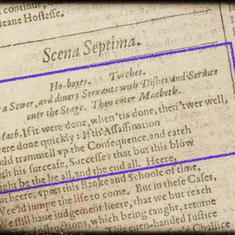We begin this week’s feature on raag Yaman with a recording of a live concert in Kolkata dating back to 1976. The artist, eminent vocalist Hirabai Barodekar (1905-1989), was one of the chief representatives of the Kirana gharana.
Though this recording does not do justice to the sweet voice that is considered the hallmark of her music, as she was performing during her later years, her rendition showcases the Kirana gayaki or vocal style in all its splendour. She sings a traditional vilambit or slow khayal in raag Yaman set to Ektaal, a cycle of 12 matras or time units, followed by a traditional drut or fast khayal set to the 16-matra Teentaal.
Badodekar’s elaboration of the vilambit khayal adheres to the Kirana style of sequential addition of swaras or notes over every few cycles of the taal, approaching each new swara in a myriad ways. However, in what listeners today would consider out of place for a Kirana gharana vocalist, she also sings bol-bant, involving interplay with the rhythmic canvas by changing the scansion and syncopation of the song-text. However, this is done only marginally.
Another exponent of the Kirana gharana is vocalist Prabha Atre, a disciple of Sureshbabu Mane and Barodekar. She sings a vilambit khayal in raag Yaman set to Ektaal followed by a drut khayal set to Teentaal and a tarana in Ektaal. With an exceedingly tuneful voice that has a sharp edge, Atre unfolds the raag through the vilambit khayal, using words from the song-text as she ascends the octave gradually. But at 17.16”, she suddenly launches into an aakaar taan or a quick melodic passage sung with the vowel "aa". This change of direction towards the taan is only momentary, as she returns to the relaxed elaboration.
She then employs sargam, or solfège, in varying speeds and combinations, which she continues even in the subsequent aakaar taans. This section demonstrates the influence of Amir Khan’s style on her singing. The taans sung in the drut khayal and the tarana demonstrate the fluidity of Atre’s voice as she moves effortlessly across the gamut, at times even making combinations of swaras that deviate from the conventional idea of Yaman.










